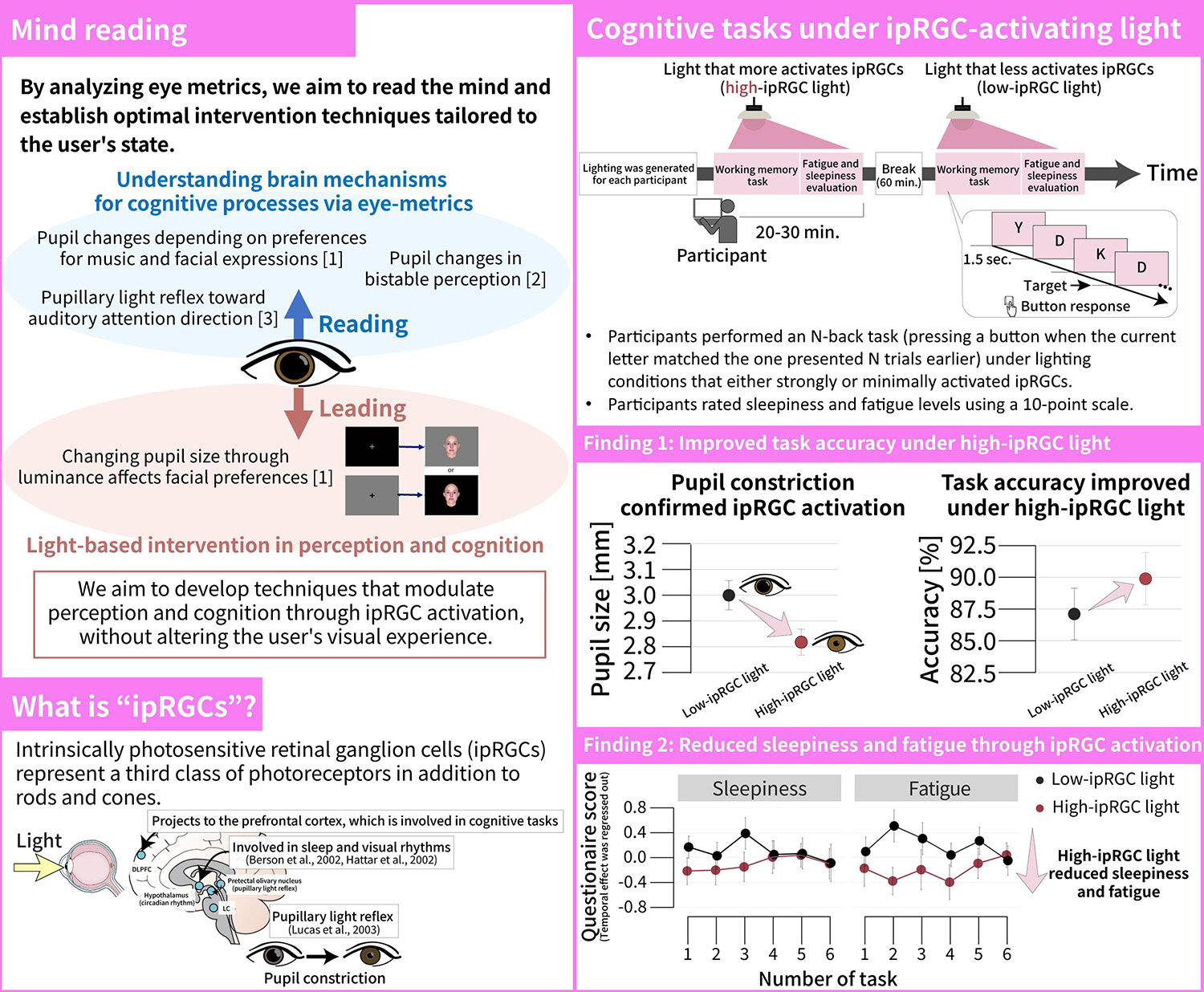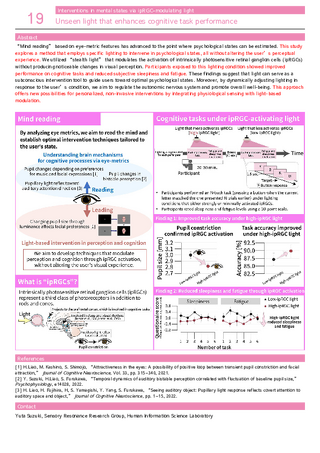| 19 |
Unseen light that enhances cognitive task performanceInterventions in mental states via ipRGC-modulating light 
|
|---|
“Mind reading” based on eye-metric features has advanced to the point where psychological states can be estimated. This study explores a method that employs specific lighting to intervene in psychological states, all without altering the user’s perceptual experience. We utilized “stealth light” that modulates the activation of intrinsically photosensitive retinal ganglion cells (ipRGCs) without producing noticeable changes in visual perception. Participants exposed to this lighting condition showed improved performance on cognitive tasks and reduced subjective sleepiness and fatigue. These findings suggest that light can serve as a subconscious intervention tool to guide users toward optimal psychological states. Moreover, by dynamically adjusting lighting in response to the user’s condition, we aim to regulate the autonomic nervous system and promote overall well-being. This approach offers new possibilities for personalized, non-invasive interventions by integrating physiological sensing with light-based modulation.

[1] H.Liao, M. Kashino, S. Shimojo, “Attractiveness in the eyes: A possibility of positive loop between transient pupil constriction and facial attraction,” Journal of Cognitive Neuroscience, Vol. 33, pp. 315–340, 2021.
[2] Y. Suzuki, H.Liao, S. Furukawa, “Temporal dynamics of auditory bistable perception correlated with fluctuation of baseline pupil size,” Psychophysiology, e14028, 2022.
[3] H. Liao, H. Fujihira, H, S. Yamagishi, Y. Yang, S. Furukawa, “Seeing auditory object: Pupillary light response reflects covert attention to auditory space and object,” Journal of Cognitive Neuroscience, pp. 1–15, 2022.
Yuta Suzuki, Sensory Resonance Research Group, Human Information Science Laboratory




